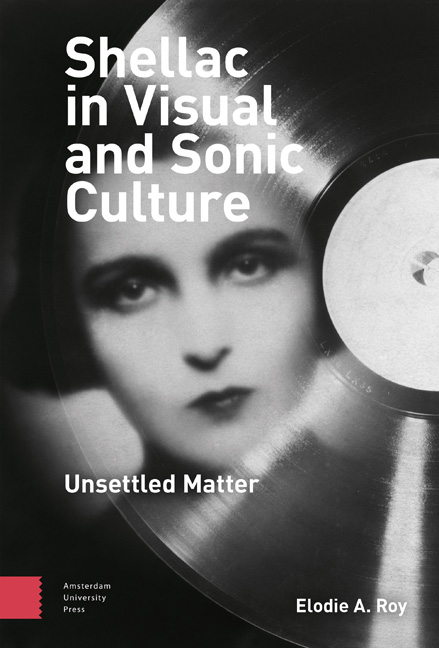Book contents
- Frontmatter
- Contents
- List of illustrations
- Acknowledgements
- Introduction: From material culture to the materials of culture
- 1 Sheen: Early stories and circulation of shellac
- 2 Crackle: Assembling the record
- 3 Mirrors: Phono-fetishism and intersensory visions
- 4 Detonations: Shellac at war
- 5 Shards: Waste, obsolescence, and contemporary remediations
- Conclusion: Sonic sculptures
- Bibliography
- Index
1 - Sheen: Early stories and circulation of shellac
Published online by Cambridge University Press: 17 February 2024
- Frontmatter
- Contents
- List of illustrations
- Acknowledgements
- Introduction: From material culture to the materials of culture
- 1 Sheen: Early stories and circulation of shellac
- 2 Crackle: Assembling the record
- 3 Mirrors: Phono-fetishism and intersensory visions
- 4 Detonations: Shellac at war
- 5 Shards: Waste, obsolescence, and contemporary remediations
- Conclusion: Sonic sculptures
- Bibliography
- Index
Summary
Abstract:
Chapter 1 investigates the early uses, cultural understandings and traditional applications of lac and shellac as visual media in India (where it was notably used to decorate the body in practices of self-inscription). It retraces how the materials were imported by Dutch merchants and the British East India Company in the early 1600s, paying attention to the geopolitical infrastructure which authorised its circulation. The chapter describes how the medium was speculatively translated, transformed and reinterpreted in the European context. In particular, attention is paid to the reflective and imitative properties of the medium – and to the intuition of its sonic properties (when Italian violin makers began using it to varnish musical instruments).
Keywords: colonialism, India, shellac, East India Company, visual Culture
The story of shellac begins on a local, infinitely small scale. The resource which, once processed, became a key component in global record manufacturing at the turn of the twentieth century was secreted by a tiny parasitic insect. The Tachardia lacca or Laccifer lacca, as the insect was scientifically described in the eighteenth century, measures no more than 1/20th of an inch long. It infests a variety of host trees – principally kusum, palas and ber – most commonly found in the forest region lying between Calcutta and Central India, and yields two principal by-products. The first one of these is a reddish dye, known as lac. The second one, shellac, is an orange-coloured resinous substance exuded by the clustered bodies of breeding females infesting the fresh twigs of the host tree. In the course of their six-month existence, the blind and wingless female insects, settling ‘in colonies of thousands’ on the new growth of trees, build an intricate architecture of hard resinous cases and passageways. This labyrinthine infrastructure is the place where the insects live and give birth, but it also serves as their graveyard. The new generation, unable to settle on the parent tree, swarm and find other trees to infest. The cycle begins again. The lac-encrusted branches of the old tree are manually harvested and form the basis for shellac production (see Chapter 2). The production of shellac – and by extension the history of sound reproduction – is closely linked to the cycles of productivity and fertility of the insects.
- Type
- Chapter
- Information
- Shellac in Visual and Sonic CultureUnsettled Matter, pp. 39 - 62Publisher: Amsterdam University PressPrint publication year: 2023



